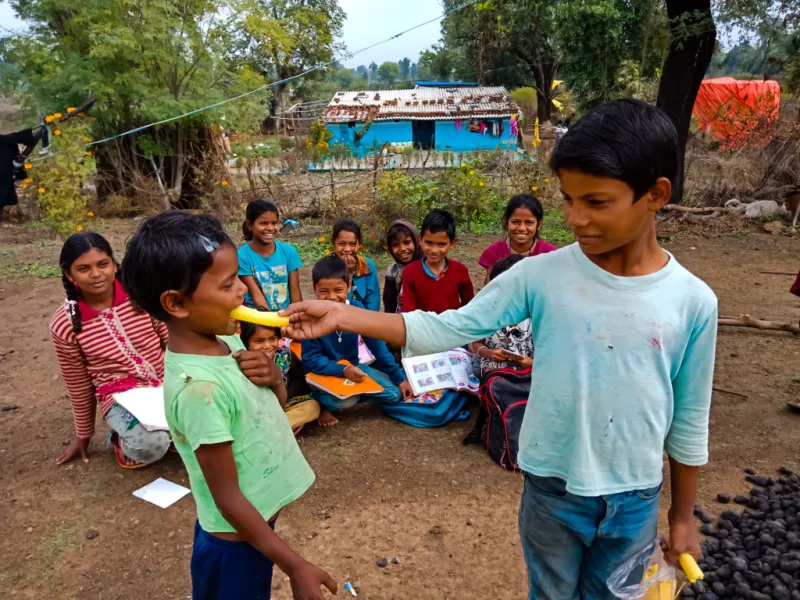Objective:
- This Scheme is designed to create a hunger-free India by ensuring food security to all the citizens of India and is sponsored by the Government of India.
- The Poorest of the country’s poor people are covered under this Scheme where they are provided with food supplies and important commodities at subsidized rates, which are required for their daily needs.
Eligibility:
- All the Below poverty line families are eligible to apply for this Scheme.
- The families whose annual income is Rs.15000 and below are eligible for this Scheme.
- This Scheme is applicable for all eligible disabled people.
- The families led by widows and older adults aged 60 and above are eligible for this Scheme.
- The tribal families residing in rural and mountain areas are eligible for this Scheme.
Scheme Highlights:
- This initiative was launched by the then honorable Prime Minister Atal Bihari Vajpayee on 25th December 2000, in Rajasthan.
- In India, 5% of the total population lacks proper meals a day as of December 2000, and this Scheme aims to cover those people and ensure a proper food supply.
- For any further updates or information about the Scheme, one can follow the instructions on the website: https://dfpd.gov.in/.
- BPL Certificate, Income Certificate and an Affidavit saying that applicant does not hold any Ration card previously should be produced to avail this Scheme.
- Antyodaya Anna Yojana Ration cards will be issued for eligibility for this Scheme.
- This Scheme is maintained by the Ministry of Consumer Affairs, Food and Public Distribution.
Results:
- This Scheme was expanded twice in June 2003 and again in August 2004.
- This Scheme has increased the count of families to 50 lakhs each time it expanded which made this Scheme cover a whooping number of families, which is 2.50 crore families.
- When this Scheme was expanded, 23% of Below poverty line families were covered under ANY.
Features of Antyodaya Anna Yojana:
- Under this Scheme, first, they identify the one-crore low-income families under the below poverty line and covered under Targeted Public Distribution System(TDPS) within the states.
- Once these families are identified, then under this Scheme, they are provided with grains at a subsidized rate of Rs.2 per kg for wheat, Rs.3 per kg for rice and rs.2 per kg for coarse grains.
- The cost of the food supply and the costs related to transportation, distribution, and expenses of dealers are also covered by the respective states and UT’s under this Scheme.
- Also, the households entitled to this Scheme are provided with 35kg of food grains per month.
- The identified families eligible for Antyodaya Anna Yojana will be provided with a special ration card, an indifferent color that differs from a regular ration card.
- Antyodaya Anna Yojana allocates nearly 8.51 lakh tons of food grains per month.
Beneficiaries
Beneficiaries are present at every corner of the country. However, these beneficiaries are classified differently depending upon their place. Rural beneficiaries have different eligibility, whereas urban beneficiaries have different eligibility criteria.
Rural Area Beneficiaries of AAY
- Below the poverty line, families whose income is up to 15000 are eligible for this Scheme.
- Economically poor widows and old age people receiving a pension are covered under this Scheme.
- Small and marginal farmers along with landless agricultural laborers are eligible to apply for this Scheme.
- Physically challenged people can also make avail of this AAY scheme.
- Rural artisans such as carpenters, weavers, porters kind of workers can apply for this Scheme.
Urban Area Beneficiaries of AAY
- Economically weaker families whose annual income is less than 15000 can be benefitted under this Scheme.
- Daily wagers and people living in slums are beneficiaries of this AAY scheme.
- Artisans like porter and other domestic workers can be eligible under this AAY scheme.
- Fruits and flower sellers construction workers can apply for this AAY scheme.
- Families headed by widows, physically disabled persons or older people who age more than 60 years with no societal support or assured economic support will benefit from this Scheme.
- Other small workers such as snake charmers, rag pickers, cobblers can also apply for this Scheme.

